This story appears in the March/April 2021 issue of Hagerty Drivers Club magazine, in America, which went to print prior to the death of Bruce Meyers. You can read the dune-buggy legend’s obituary here.
I’d always thought Bruce Meyers was indestructible.
Long before he created the Meyers Manx, he survived a kamikaze attack that forced him to abandon ship in the Pacific, and even as he was launching the dune buggy craze, he overcame a serious accident after a misguided attempt to hold off Parnelli Jones during the Baja 1000 in 1968. Later, he endured the bankruptcy of his company and the depression caused by watching unscrupulous manufacturers knock off his beloved Manx by the hundreds of thousands.
But Meyers is nothing if not indomitable. With his wife, Winnie, he formed a new Meyers Manx company in 1999 and resumed building kits for new and improved buggies. When I first met him, he was 84, but he was still energetic enough to run me ragged during a daylong photo shoot/road trip. As late as 2016, when he was 90, he regally held court at the Big Bear Bash – the country’s largest annual dune buggy gathering – and I watched with amazement as he tirelessly tackled an off-road expedition through the San Bernardino National Forest.

So I was stunned when I spoke to Meyers last autumn for a story about a Manx winning the inaugural Baja 1000 – then called the Mexican Rally 1000 – in 1967. I should have known something was up because Winnie had told me she was having trouble finding a slot for me to call him in between his doctor’s visits and afternoon naps. Still, I couldn’t believe how listless and spent Meyers sounded when I finally got him on the phone. “I’m done,” he told me.
Seriously? Bruce Meyers out of gas?
Turns out there was still some fuel left in the tank.
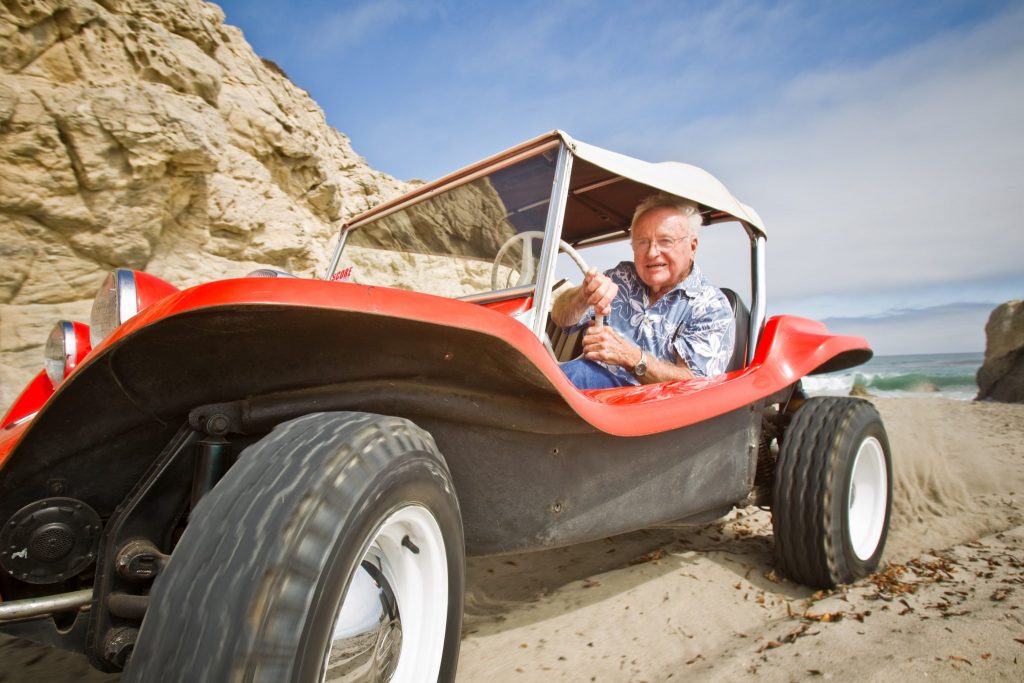
Shortly after I talked to them, Bruce and Winnie finalized a deal to sell Meyers Manx Inc. to Trousdale Ventures, a venture-capital firm managed by car collector (and Manx owner) Phillip Sarofim. Design dynamo Freeman Thomas was immediately installed as the company’s CEO. Although Thomas remains coy about future Manx projects, he calls Meyers one of his heroes. Also, as the chief architect of VW’s New Beetle and a host of other designs for Ford, Porsche, and DaimlerChrysler, Thomas understands how to celebrate a company’s heritage while carving out his own brand. So it’s safe to assume that no matter how he reimagines a modern buggy, it will retain a lot of Meyers’s inimitable DNA.
Few cars have ever been a better reflection of their creator than the Manx. Born in Southern California, Meyers was the archetypal beach boy. A lifeguard, sailor, boat builder, and surfboard shaper, Meyers did anything that kept him close to the water and far from the 9-to-5 straitjacket. After his disastrous experience on an aircraft carrier during World War II, he moved to the South Seas, living in Tahiti and running a trading post on a coral atoll before returning to the States, hard-wired for adventure.
The son of a sometimes car dealer, Meyers was also a hot-rodder with a lifelong affinity for flathead Fords. In the early 1960s, he discovered the burgeoning sport of off-roading, and he explored Mexico in a Volkswagen Microbus. Later, while sand sailing at Pismo Beach, he spotted a bodyless Beetle bounding over the dunes. “It was just zipping around like a mosquito,” he recalls. “I went home and started drawing pictures.”
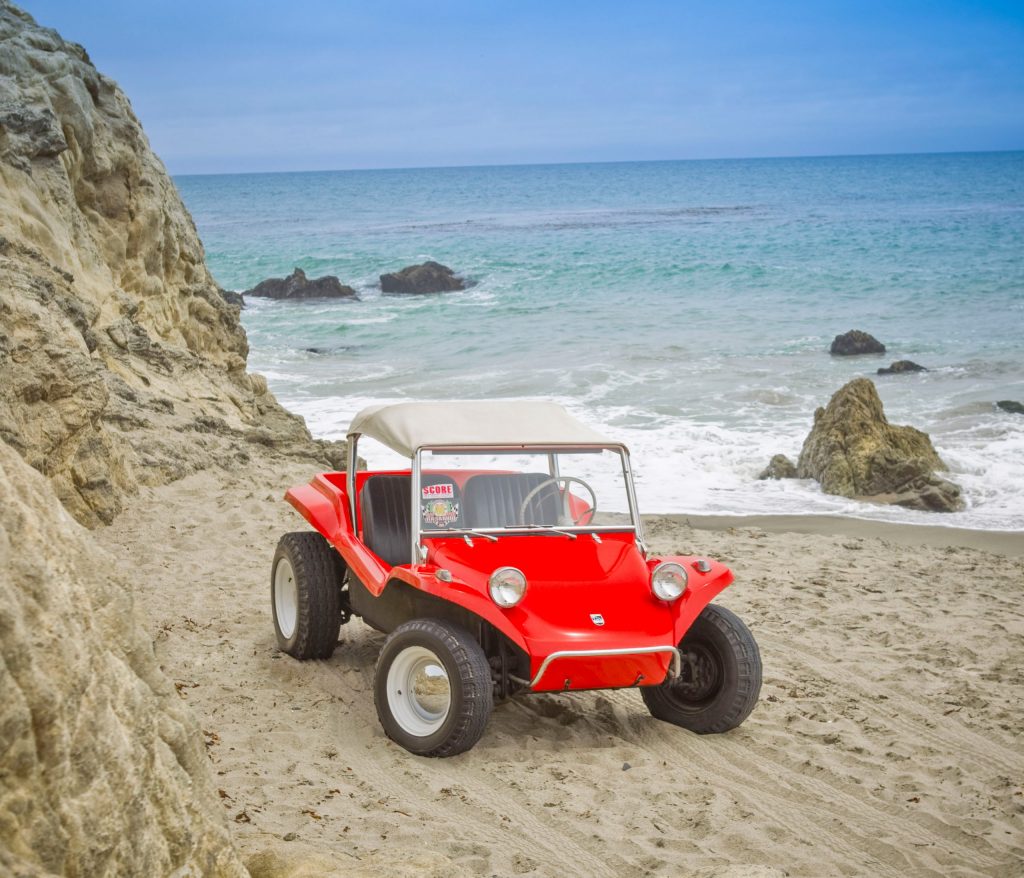
For the record, Meyers doesn’t claim to have invented the dune buggy. Other guys had already realised that the underpinnings of a VW Beetle could serve as the foundation for a remarkably capable runabout, and some of them had even fabricated crude roadster bodies out of sheetmetal. But Meyers was a formally trained artist whose sketches would look at home in a Renaissance atelier. Plus, his experience with boats and surfboards had taught him the secrets and possibilities of working with fibreglass.
Meyers shaped a minimalist fibreglass body that managed to be both sensuous and spunky – part sex kitten, part surfer dude. The only flat surfaces were the tops of the fenders, perfect for balancing beer bottles, while the tall wheel arches and short overhangs were well-suited to driving off the beaten path. The result was a body that married form and function in a frisky SoCal package.
“The sense of gesture, the sense of movement, the sense of life – I brought some of that to the sculpture of the Manx,” he once told me. “I wasn’t obstructed by any rules in my head, and I wasn’t diverted by Madison Avenue, PR input, or anything else from the business world. I was so free because I was so stupid. If I had studied automotive design, I don’t think there would have been a Meyers Manx. I would have been too sophisticated to make something so childlike. I wasn’t trying to be funny, but it came out looking like fun.”
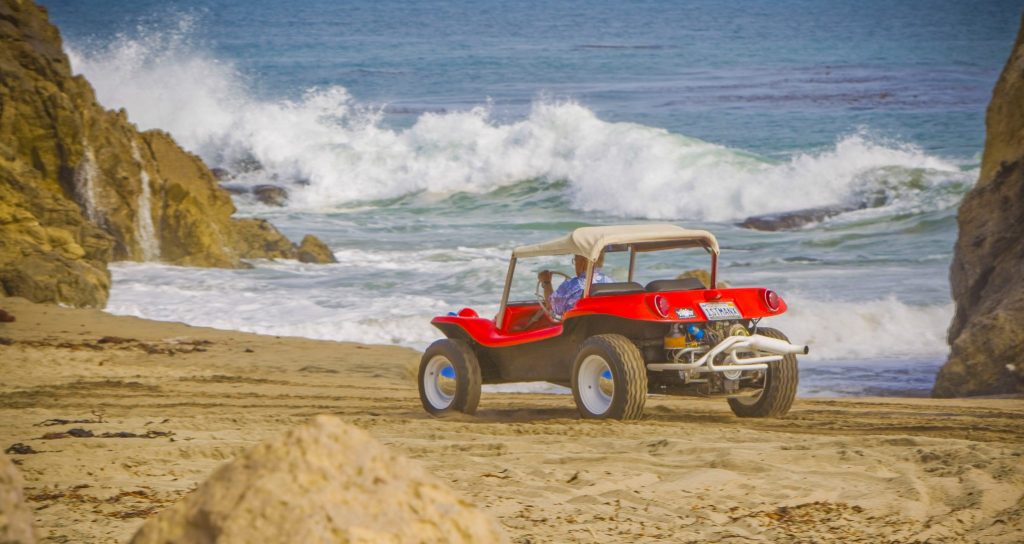
In 1963, Meyers rented a tiny garage in a sketchy section of Newport Beach and bought a ’63 Beetle that had been rolled. He salvaged the suspension and running gear and laid them out on the floor. Because the fibreglass body was stout enough to serve as a monocoque chassis, he was able to shorten the wheelbase by more than a foot. The seats were moved back to improve traction, and bigger tyres were fitted to increase ground clearance. The standard, rear-mounted four-banger and swing axle and torsion-bar suspension were retained, but the buggy was far lighter and nimbler than a road-going Beetle, and it went like stink. As Thomas puts it: “A Meyers Manx is really a sports car that goes off-road.”
Meyers started selling kits for the Manx, which was named by Road & Track co-owner Elaine Bond, in 1964, after the breed of cat that has no tail. “I hoped I would sell a couple of them to pay for my work,” he says. He quickly realised that he was losing money on each sale because the fibreglass monocoque was so labour-intensive to build. To cut costs, he modified the bodywork so it could be mounted directly to a shortened Beetle floorpan. Hot Rod put a Manx in full flight on its August 1966 cover, and Car and Driver followed with another cover story in April 1967 under the headline “You Can Build This Fun Car for $635! (plus a lot of VW parts and tender loving care).”
In summer 1967, Meyers and boyhood friend Ted Mangels stuffed Old Red, the first Manx prototype, with 50 gallons of surplus fuel in oxygen tanks, jerrycans, and milk cartons, and they mounted an assault on the Baja Peninsula. The previous year, a motorcyclist had made the trip from Tijuana to La Paz in nearly 40 hours. Despite a leaking brake line that had to be pinched closed and a gearbox secured with yards of baling wire after a transmission mount broke, the Manx smashed the record (going north, in the opposite direction) by nearly five hours. Meyers blasted out a press release: “Buggy Beats Bikes in Baja.” Two months later, another Manx won the first Mexican 1000 Rally, confirming its off-road bona fides.
In 1968, buggies went nationwide after they were driven on-screen by Steve McQueen (with Faye Dunaway riding shotgun) in The Thomas Crown Affair, and by Elvis Presley in Live a Little, Love a Little. Orders rolled in. B.F. Meyers & Co. grew to 80 employees and 75 dealers across the country, and nearly 7000 kits were shipped. Unfortunately, anybody with a Manx could splash a fibreglass mould of the body to replicate it. Meyers estimates that about 300 copycats got into the act, and as many as 250,000 Manx wannabes made it to market.
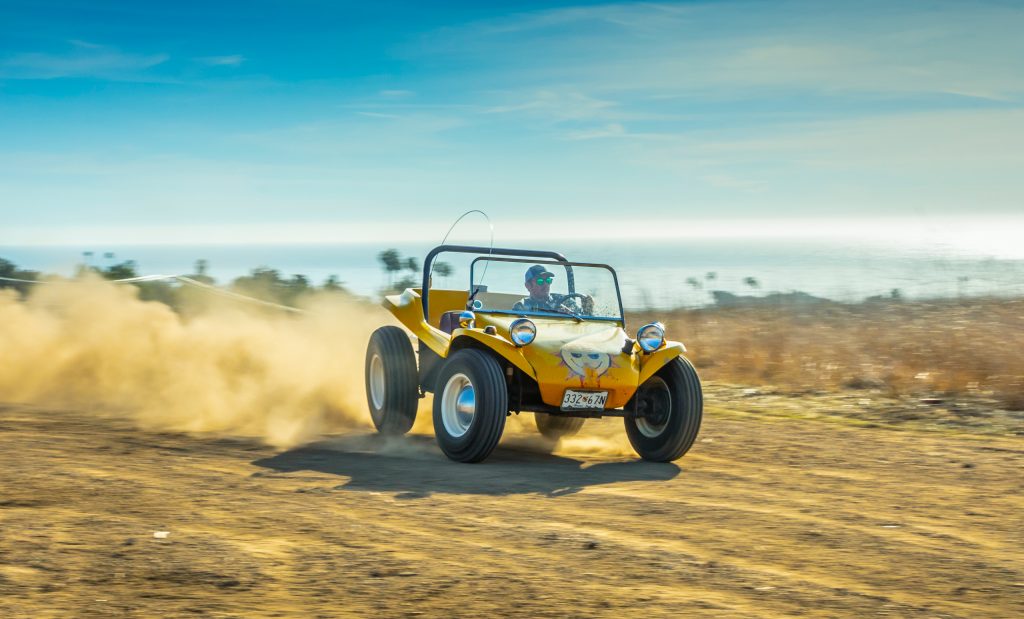
Meyers tried but failed to enforce his patents in court. “How do you make any sense to a judge who doesn’t know a dune buggy from a grilled-cheese sandwich?” he griped afterward. In 1971, the remaining assets of the company were liquidated at pennies on the dollar. “It used to piss me off,” he admits, “and I lived with anger for many years.”
Meyers sold Old Red and went into decades-long buggy denial. It wasn’t until 1994 that Jacky Morel, publisher of Super VW Magazine, cajoled him into attending a VW festival in France. With tears in his eyes, Meyers led a parade of buggies around Le Mans. “You’re a very unhappy man because you focus on the wrong things,” Morel told him. “Go home and start a club, make a new Manx for the ’90s, and write a book.”
Meyers took Morel’s advice. Since going into business in Valley Center in northern San Diego County, he and Winnie have sold about 550 kits, divided among five distinct models. Meanwhile, the vibrant Manx Club, which welcomes buggies of all manufacture, now sports more than 5600 members worldwide. Along the way, Meyers also reacquired Old Red, which now resides in the Petersen Automotive Museum. The memoir, alas, remains a work in progress.
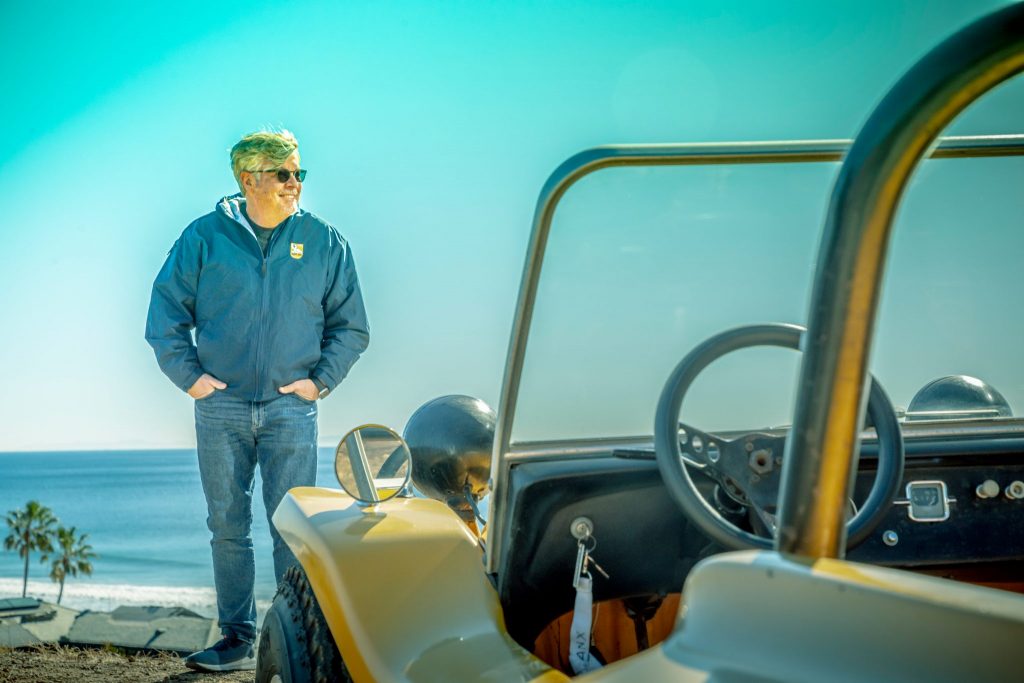
Over the years, several people tried to buy the company, but none of the offers was taken seriously until last year. “I never got the feeling that anybody was capable enough financially or interested in keeping the legacy going,” Winnie said when I reached her by phone shortly after the sale. With Sarofim and Trousdale Ventures, she said, money wasn’t an issue, and Bruce and designer Thomas had bonded many years ago over a shared design vision.
“Bruce is an artist and a visionary,” Thomas says. “He made a marriage of brilliant engineering and design. But the magical part is that he built a whimsical, endearing object that makes you smile when you look at it. That puts him on the level of an Alec Issigonis (creator of the Mini) or an Erwin Komenda (credited with the Porsche 356).”
Timing, of course, is everything in life. Winnie was tired of working seven days a week, and Bruce’s body was wearing out even though he remained as passionate as ever. “I’m not doing great,” he admitted to me with a hacking cough. “The only thing that doesn’t die is creativity. I’ve still got ideas for building better buggies.”
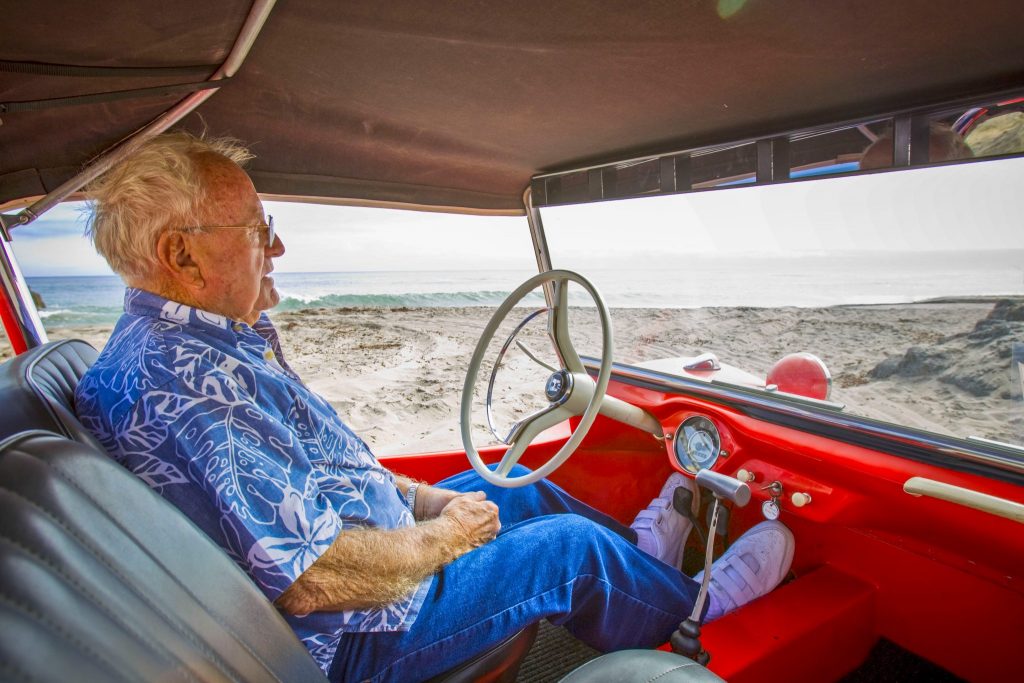
He described his dream project, a larger version of the Meyers Tow’d, a heavy-duty buggy designed for hardcore off-roading, powered by an electric motor with a long-range battery that he wants Thomas to procure. “It’ll be cheaper, it’ll be lighter, it’ll be faster. Electric is the future, isn’t it?” he said, and if I were in the room with him, I know I’d see a twinkle in his pale blue eyes.
Many years ago, I remember lounging with Meyers in Old Red, gazing at the waves rolling in on a pristine beach near Malibu. “The Manx is a toy. It’s not meant to be taken seriously,” he’d told me. “It sends a message, and that message is: ‘Join me. I’m having fun.’”
Read more
Liz Carmichael and the Dale car con of the 1970s
Dieter Klein travels the world in the quest for the perfect photograph of abandoned cars
Alternative power to the people










Amazing story, I was building them when I was 17 in 1970, really enjoyed it.